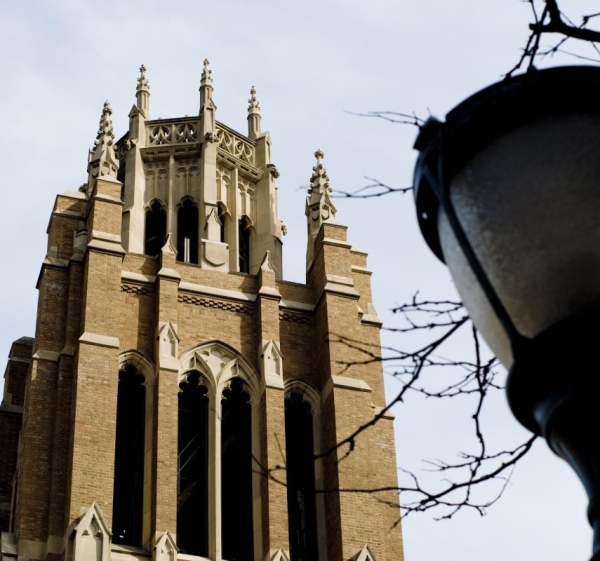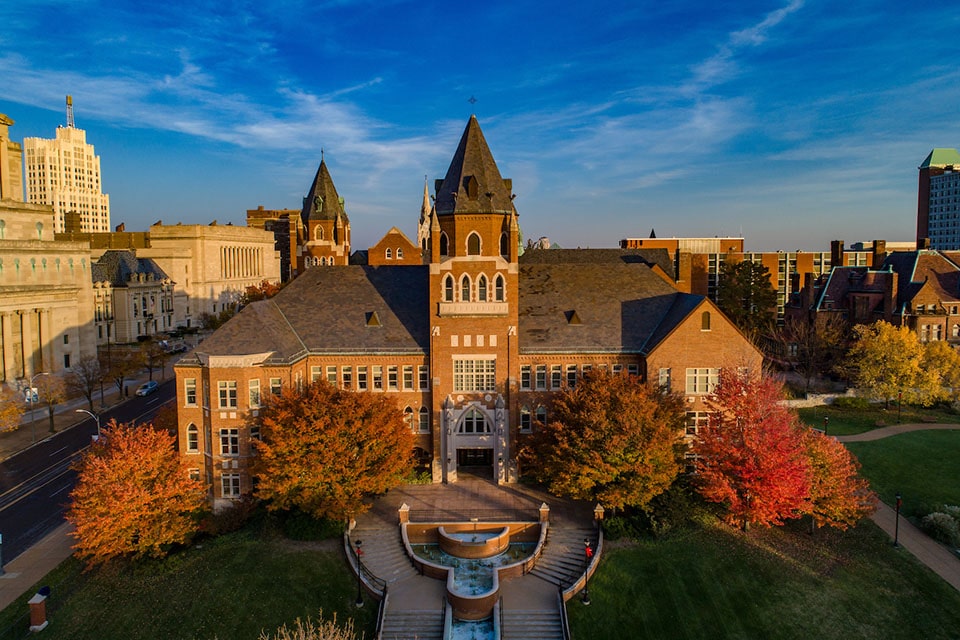
Jesuit College Workers Unite
December 10, 2020
SLU Ranks as a Top School for Undergraduate Business Students
January 12, 2021As the pandemic has forced most colleges and universities to adopt remote instruction, it’s worth remembering that more than 50 years ago some schools voluntarily experimented with remote instruction via televised classes. That did not go well either. Students did not feel the same connection to their instructors and that, in turn, made a difference in what was learned. “It’s better to have a poor instructor in the classroom,” said one unhappy professor in 1967, “than to have a good one on TV.”
The vignette comes from Jonathan Zimmerman’s “The Amateur Hour: A History of College Teaching in America.” Mr. Zimmerman, an education historian at the University of Pennsylvania, has braided together a smooth narrative from many short pieces of thread, consisting of glimpses into the experiences of faculty members, students and administrators from the early 19th century up through the 1990s, and encompassing two- and four-year institutions, large and small, elite and not. The book is economical in its presentation of materials, gathered from 60-plus archives, and even-handed in presenting the gripes of instructors and students.
The book’s clever title refers to the way that higher education, when hiring, evaluating and rewarding faculty, gives most attention to research productivity and little to teaching effectiveness. Partly this is due to the difficulty of measuring effectiveness in the classroom, but it is also due to the resistance of faculty members to having their teaching reviewed by peers—something that would, Mr. Zimmerman says, “make their teaching truly professional.”
“The Amateur Hour” begins with the recitation model of college teaching, which was near universal in the early 1800s. Students were asked to read an assigned passage and then, at class time, recite either a summary or, some professors might insist, the passage in its entirety. When lectures began to displace recitation, some college presidents worried aloud about the problem of keeping students actively engaged throughout the class session. The Yale Report of 1828 wondered whether the student attending a lecture “may repose upon his seat and yield a passive hearing . . . without ever calling into exercise the powers of his own mind.”

THE AMATEUR HOUR
By Jonathan Zimmerman
Johns Hopkins, 294 pages, $34.95
As more students enrolled in higher education, hiring did not keep pace. Class sizes grew, and students had less contact with professors. Previously, faculty members at small liberal-arts colleges knew every student on campus and could demonstrate personal concern for them. By the late 19th century, however, many American faculty members were trained in Germany and brought back with them a passion for research, as well as more interest in libraries and laboratories than in students. In 1887, Julius Seelye, the president of Amherst College, lamented the changes: “Education is a wholly personal work. It is not gained by books, or by instruction alone, nor by anything in place of the living inspiration of the living teacher.”
NEWSLETTER SIGN-UP
Books
Be the first to find out what’s new and what’s good. Get the weekend book reviews before the weekend.PREVIEWSUBSCRIBE
By 1900, the demotion of teaching in institutional priorities was so pronounced that the headline for an editorial in the Nation magazine declared, in uppercase letters, “THE DECLINE OF TEACHING.” Ten years later David S. Jordan, the president of Stanford University, conceded that “the young instructor has been urged to place as many printed pages as possible to his credit” and “encouraged to look with scorn on the ‘mere teacher’ who cares for the intellectual welfare of the students.”
Worse, the better an instructor was at teaching, the less standing he had in his discipline. An Ohio State dean wrote that same year that “there is a rather wide spread notion in American Universities that a man who is an attractive teacher must in some way or other be superficial or unscientific.”
The leitmotif that runs through Mr. Zimmerman’s narrative is that class sizes continued to grow and grow and grow: The economics proved too compelling even for liberal-arts colleges, the last bastions of small-batch instruction, to ignore. The largest classes have been at universities, of course, and since the early 20th century these institutions have been trying to counterbalance the worsening student-instructor ratio with honors seminars, independent study, small-group tutorials and other more personalized formats. But these programs also required assigning many more students to very large classes. “If the colleges are to ask society to support a more individualized type of instruction,” wrote Homer L. Dodge, a physicist and dean at the University of Oklahoma, in 1932, “college professors must be willing to learn the technique of handling large groups of students.”
Foundations funded many 20th-century initiatives to improve college teaching, but a lack of knowledge of what was needed for excellence stymied these efforts. “We perhaps can recognize it when we see it,” said one University of Minnesota professor, “but we cannot draw up a bill of particulars beforehand.”
New technology, at various junctures, has briefly promised a means of giving every student personalized instruction—and freeing the amateur instructor to pursue research in his discipline. Mr. Zimmerman brings to light the evangelism of psychologist Fred S. Keller, who in the early 1960s developed a template for self-paced college courses that he called the Personalized System of Instruction. But self-paced classes required considerable self-discipline of the students, and though PSIs enjoyed a vogue in hundreds of places in the early 1970s, course completion rates were dismal.
Mr. Zimmerman has been honored for his teaching and is an active participant in a teaching-improvement initiative at his home institution. But even he fumbles for words when trying to describe what makes a great college teacher. It requires a “distinctive rapport” with students, he says, but also “a kind of mystical presence that cannot always be defined but also cannot be denied.” Also worth noting for our Year of the Plague: He believes that the ineffable, energizing spark of education cannot be conveyed via computer connection, but only face-to-face.





11 Comments
Howdy very cool site!! Guy .. Beautiful .. Amazing ..
I’ll bookmark your site and take the feeds also? I’m satisfied
to find so many useful information right here in the put up, we need
develop more techniques in this regard, thank you for sharing.
. . . . .
Also visit my blog nordvpn coupons inspiresensation
Your article helped me a lot, is there any more related content? Thanks!
I constantly spent my half an hour to read this website’s articles or reviews everyday along with a
cup of coffee.
My blog – eharmony special coupon code 2025
It’s remarkable to pay a quick visit this website and reading the views of all colleagues on the topic of this piece of writing, while I am
also keen of getting familiarity.
Feel free to visit my blog – vpn
Your article helped me a lot, is there any more related content? Thanks!
I’m truly enjoying the design and layout of your blog.
It’s a very easy on the eyes which makes it much more pleasant for
me to come here and visit more often. Did you hire out a designer to create your theme?
Fantastic work! https://tinyurl.com/23mmjj8a gamefly 3 month free trial
Hello! I’ve been following your weblog for a while now and finally got the courage
to go ahead and give you a shout out from Austin Tx! Just
wanted to say keep up the good work! How does vpn work https://tinyurl.com/2y95dtjr
Ahaa, its pleasant dialogue regarding this post here at this weblog, I have read
all that, so now me also commenting at this place.
This paragraph will help the internet users for creating new webpage or
even a weblog from start to end.
Your point of view caught my eye and was very interesting. Thanks. I have a question for you.
Do you have a spam problem on this website; I also am
a blogger, and I was wondering your situation; many of us have developed some nice practices and
we are looking to exchange solutions with other folks, please
shoot me an e-mail if interested.
Here is my webpage :: https://tinyurl.com/mtu92az5